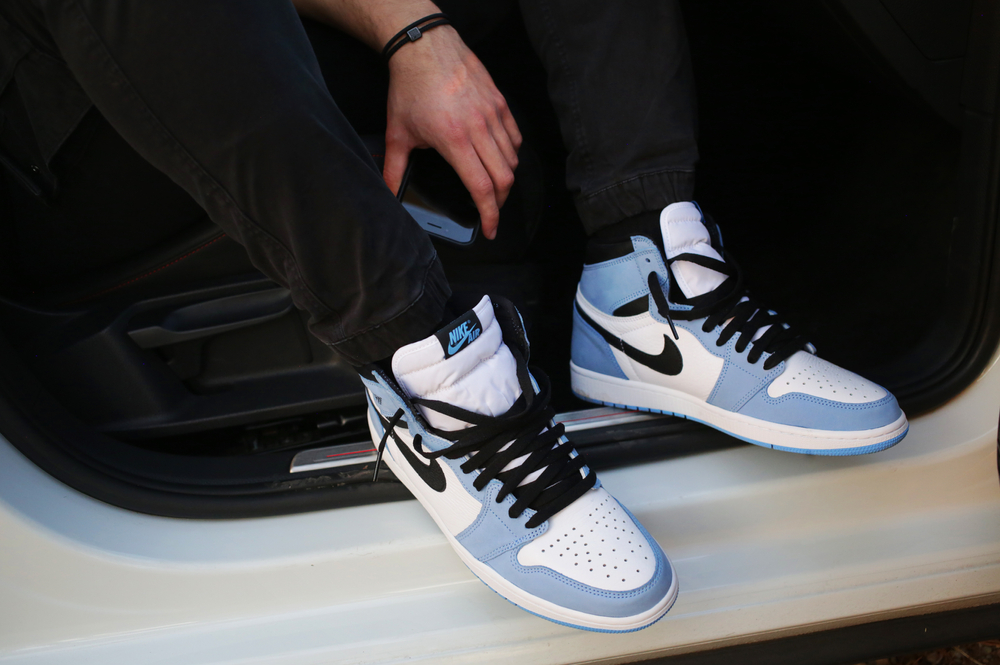In the hustle and bustle of modern life, it’s easy to fall into a cycle of convenience over economy. You rush through your days, patching up the little gaps with quick fixes and easy solutions that often have a hidden cost. Unknowing or simply unbothered, many people find themselves spending more than they should on everyday items and services. The fatigue of managing countless responsibilities can lead to impulsive choices and overlooked expenses that pile up over time. Recognizing these patterns is the first step towards smarter spending and reclaiming control over your finances.
1. Bottled Water

Many people grab a bottle of water on the go, paying for the convenience without thinking twice. However, the cost of bottled water can add up significantly over time. Dr. Peter Gleick, a renowned water expert and author, highlights that the price of bottled water is often marked up 2,000 times more than the cost of tap water. This staggering markup is exacerbated by the environmental impact of discarded plastic bottles. By investing in a reusable water bottle and a high-quality water filter, you can reduce both your expenses and your carbon footprint.
Despite its marketed purity, bottled water is not always a healthier option. Many brands are essentially filtered tap water, yet people are drawn to the sleek packaging and perceived superiority. The convenience factor is undeniable, especially when you’re on the move or during a busy day. Yet, with a little planning, carrying your own filled water bottle can become a habit that saves money and reduces waste. Prioritizing this small lifestyle change can make a significant difference to your budget and the environment.
2. Pre-Packaged Foods

Pre-packaged foods are a quick fix for busy schedules, but they come with a premium price tag. The allure of grab-and-go meals often overshadows the reality of what you’re paying for—convenience. While these foods may save you time in the short term, the cost per serving is often much higher than preparing meals at home. Not to mention, they typically contain preservatives and additives that you might prefer to avoid. Taking the time to plan and prepare meals can lead to healthier choices and substantial savings.
Moreover, pre-packaged foods generate a lot of waste due to their excessive packaging. This habit not only affects your wallet but also contributes to environmental issues. Cooking at home allows you to control portion sizes, ingredients, and waste, leading to a more sustainable lifestyle. The initial time investment may seem daunting, but the long-term benefits are worth it. By rethinking your approach to meals, you can enjoy fresher, more nutritious food without the inflated price.
3. Premium Coffee

Stopping by your favorite coffee shop daily can quickly drain your wallet. While the occasional treat is perfectly reasonable, making it a habit transforms it into a costly routine. According to a survey by the National Coffee Association, the average American spends over $1,100 annually on coffee. This expenditure is driven by the allure of barista-made beverages and the social experience of cafes. However, learning to make your own coffee at home can be both rewarding and cost-effective.
The upfront investment in a quality coffee maker and beans might seem steep, but it pays off over time. You have the freedom to experiment with flavors and brewing techniques, tailoring each cup to your liking. Many people find the ritual of making coffee at home to be a calming start to their day. Additionally, brewing your own coffee reduces waste from disposable cups and packaging. Embracing this change can lead to significant savings, both financially and environmentally.
4. Brand-Name Medications

When illness strikes, people often turn to brand-name medications for relief without considering generic alternatives. These medications are heavily marketed, leading many to believe they are superior. However, generic drugs contain the same active ingredients and are typically just as effective. The price difference can be substantial, as generics often cost 80-85% less than their brand-name counterparts. By consulting with your healthcare provider, you can make informed choices that benefit both your health and your budget.
Pharmaceutical companies invest heavily in advertising to maintain their market share. This leads to a perception that brand-name drugs are of higher quality or more reliable. However, the FDA ensures that generics meet rigorous standards for safety, effectiveness, and quality. Switching to generics is a simple way to reduce healthcare costs without compromising on treatment outcomes. Being proactive in discussing options with your doctor can lead to smarter, cost-effective decisions.
5. Gym Memberships

The appeal of a gym membership often lies in its promise of motivation and access to a variety of equipment. Yet, many people pay top dollar for memberships they rarely use. A report by the IHRSA found that only about 18% of gym members use their facilities consistently. This is a significant expense for minimal return, especially when free or low-cost alternatives are available. Exploring outdoor activities, online workouts, or community fitness classes can provide exercise opportunities without the hefty price.
For those who do frequent the gym, it’s crucial to assess whether the membership offers real value. High-end gyms boast amenities like saunas and juice bars, but these extras come with a premium cost. Consider how much you actually use these features compared to the basics you could access elsewhere. Investing in some home gym equipment might offer more flexibility and long-term savings. By reevaluating your fitness needs, you can find a balance that keeps you active without breaking the bank.
6. Extended Warranties

Extended warranties are often pitched as a safety net for your purchases, but they can be a financial trap. Retailers push these warranties, knowing they rarely get used and contribute significantly to their profits. Most products have a low failure rate within the warranty period, making extended warranties an unnecessary expense. Instead, consider the manufacturer’s warranty and consumer protection laws that already cover most defects. By saving the money you would spend on these warranties, you can create your own fund for future repairs or replacements.
Furthermore, extended warranties often come with fine print and exclusions that leave customers unprotected. The peace of mind they promise is often illusory, as the terms and conditions can limit claims. Consumers frequently forget about these warranties when issues arise, resorting to replacements rather than claiming a repair. Analyzing the product’s reliability and reading reviews can better inform your purchase decisions. Ultimately, avoiding extended warranties can free up funds for more essential expenses.
7. Bank Fees

Bank fees are an insidious drain on many people’s finances, often going unnoticed until they accumulate. Overdraft charges, ATM fees, and account maintenance fees can add up quickly if left unchecked. A study by Bankrate revealed that the average overdraft fee is $33.58, a cost that can be avoided with some planning. Financial expert and author Jean Chatzky advises consumers to shop around for banks with low or no fees and to utilize online banking tools to monitor funds. This proactive approach can help you sidestep unnecessary charges and keep more money in your pocket.
Switching to a bank that aligns with your financial habits can make a significant impact. Many online banks offer fee-free accounts, providing a viable alternative to traditional banks. Additionally, setting up alerts for low balances or potential overdrafts can help you stay on top of your finances. Taking the time to read the fine print on banking agreements can uncover hidden fees. By being vigilant and informed, you can avoid the trap of excessive bank fees.
8. Cable Television

Cable television is becoming increasingly obsolete in the age of streaming, yet many people continue to pay for costly packages. The allure of live TV and a wide selection of channels can mask the fact that most people only watch a handful of them. Streaming services offer a more customizable and affordable solution, often at a fraction of the price. Cutting the cord can seem daunting, but the savings are undeniable. By assessing your viewing habits, you can create a tailored entertainment experience that fits your budget.
The competition among streaming platforms has led to a proliferation of options, each offering unique content. This allows for greater flexibility and control over what you watch and pay for. Bundling streaming services with devices like smart TVs or streaming sticks can further enhance your experience. With the right combination, you can access the content you love without the exorbitant cost of cable. Embracing this change might involve initial research, but the long-term benefits make it worthwhile.
9. Branded Clothing

The allure of branded clothing often lies in its perceived status and quality. People pay a premium for logos, believing it signifies superior craftsmanship and prestige. However, many brands mark up prices drastically, banking on their reputation rather than actual quality. Exploring lesser-known labels or shopping during sales can yield high-quality items without the inflated cost. Being mindful of marketing tactics can help you make more informed decisions and cultivate a wardrobe that reflects your style and budget.
Moreover, branded clothing trends change rapidly, leading people to spend frequently on the latest must-have items. This cycle not only drains your finances but contributes to the environmental impact of fast fashion. Investing in timeless pieces that withstand changing trends can save money and reduce waste. Additionally, second-hand shops and online platforms offer access to quality clothing at a fraction of the cost. By shifting focus from brands to quality and sustainability, you can build a wardrobe that aligns with your values.
10. Lottery Tickets

The dream of striking it rich entices many people to buy lottery tickets, despite the daunting odds. The allure is strong, promising a life-changing windfall for a small investment. However, the reality is that the chances of winning are astronomically low, akin to a financial black hole. Expert analyses reveal that the lottery is essentially a regressive tax, disproportionately affecting lower-income communities. Understanding the statistics can impart a more rational perspective on this gamble.
Lottery tickets are a form of entertainment for some, but the cost can escalate if it becomes a regular habit. The appeal lies in the fantasy, fueling hope and excitement that overrides logical financial thinking. However, by redirecting this money into savings or investments, you can achieve more secure financial growth. Finding alternative ways to experience excitement, like hobbies or experiences, can be more rewarding in the long run. Re-evaluating the role of chance in your financial planning can lead to more practical and fulfilling outcomes.
11. Luxury Car Features

The allure of luxury car features often tempts people to spend far beyond their initial budget. While state-of-the-art technology and aesthetic enhancements are appealing, they can significantly increase the cost of a vehicle. Manufacturers package these features as must-haves, enticing buyers with the promise of status and convenience. However, many advanced features become obsolete quickly or are seldom used in everyday driving. Prioritizing essential functions over luxury options can lead to smarter investment in your transportation needs.
The rapid depreciation of cars means that luxury features often lose value faster than the car itself. This can lead to a poor return on investment when it’s time to sell or trade in your vehicle. Focusing on reliability, fuel efficiency, and safety can offer more long-term satisfaction and savings. By researching and test-driving different models, you can find a car that meets your needs without unnecessary extras. This approach allows for a more pragmatic and financially sound vehicle purchase.
12. Greeting Cards

The tradition of giving greeting cards persists, yet it often involves paying for sentimentality at a high cost. A single card can range from $3 to $10, with people frequently overlooking the cumulative expense. This practice is fueled by the belief that cards are essential for commemorating special occasions. However, the sentiment can be equally expressed through alternative means, such as personalized messages or handmade cards. By rethinking this tradition, you can maintain meaningful connections without the financial burden.
Moreover, many greeting cards end up discarded shortly after they’re received, leading to unnecessary waste. The environmental impact of card production and disposal is significant, prompting a need for more sustainable practices. Digital cards offer an eco-friendly and cost-effective alternative, allowing for instant delivery and personalization. Exploring these options can reduce both the financial and environmental costs associated with traditional greeting cards. By embracing change, you can express thoughtfulness in innovative and sustainable ways.
13. Impulse Purchases

Impulse purchases are a financial pitfall that many people fall into, seduced by the thrill of instant gratification. The ease of online shopping has exacerbated this, making it simple to buy without much thought. Retailers exploit this tendency through strategic marketing tactics, such as limited-time offers and suggestive selling. These unplanned expenses can accumulate quickly, straining your budget and leading to buyer’s remorse. Awareness and self-discipline are key to curbing this habit and preserving financial health.
Creating a budget and sticking to a list when shopping can help manage impulse buying. It’s beneficial to implement a waiting period for non-essential purchases, allowing time to assess their necessity. Practicing mindfulness about spending can lead to more intentional and satisfying purchases. By understanding the emotional triggers that lead to impulse buying, you can develop strategies to resist them. This conscious approach fosters more sustainable financial habits and a more balanced lifestyle.
This article is for informational purposes only and should not be construed as financial advice. Consult a financial professional before making investment or other financial decisions. The author and publisher make no warranties of any kind.








